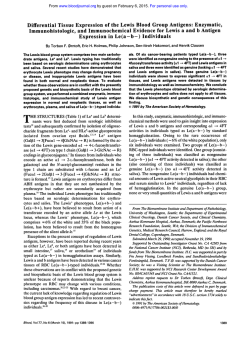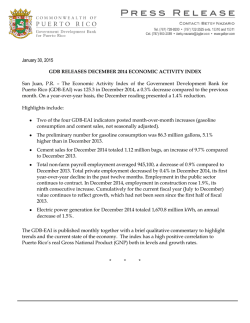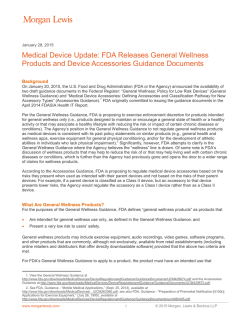
j-s75020-14 non-precedential decision - see
J-S75020-14 NON-PRECEDENTIAL DECISION - SEE SUPERIOR COURT I.O.P. 65.37 COMMONWEALTH OF PENNSYLVANIA IN THE SUPERIOR COURT OF PENNSYLVANIA Appellee v. KENNETH A. LEWIS Appellant No. 2977 EDA 2013 Appeal from the Judgment of Sentence August 9, 2013 In the Court of Common Pleas of Philadelphia County Criminal Division at No(s): CP-51-CR-0002049-2011 CP-51-CR-00052952011 BEFORE: ALLEN, J., LAZARUS, J., and MUNDY, J. MEMORANDUM BY LAZARUS, J.: FILED FEBRUARY 03, 2015 Kenneth A. Lewis appeals from the judgment of sentence, imposed in the Court of Common Pleas of Philadelphia County, following his conviction for multiple crimes stemming from two separate incidents that were consolidated for trial. After careful review of the record, we affirm. The trial court set forth the facts of the case as follows: On December 17, 2010, complainant, A.S., visited Lewis at his apartment . . . . Shortly after A.S.’s arrival [they] began drinking beer and consuming cocaine, which continued for most of the day. At some point . . . [Lewis] began making sexual advances toward [A.S.]. [A.S.] resisted, reminding [Lewis] that she was a lesbian and in a relationship. [Lewis] became angry and when [A.S.] attempted to leave he assaulted her and an altercation ensued. [Lewis] punched [A.S.] in her right eye, fracturing her orbital bone, nose, and jaw. [A.S.] attempted to escape, running for the door, however, [Lewis] followed, put her in a choke hold, threw her onto the bed, telling [A.S.] that he was going to find his gun and kill her. [A.S.] struggled with [Lewis] for approximately forty-five minutes while [Lewis] J-S75020-14 continued with his arms around [A.S.’s] neck, punching her in the head multiple times. [Lewis] removed [A.S.’s] pants and underwear, and he then inserted his penis into her vagina, followed by his tongue, then his penis again. When [Lewis] was finished his assault, he apologized to [A.S.] and offered to transport her to the hospital but conditioned on her fabricating a story that did not implicate him. [A.S.] agreed and [Lewis] transported her to Pennsylvania Hospital. [Lewis] stayed with [A.S.] in the hospital while police interviewed her and he left when [A.S.’s] mother arrived. [A.S.] testified that she continued to tell the fabricated story as she feared [Lewis] might do her harm[.] The following day [A.S.’s mother] . . . transported her to her father’s home in Drexel Hill. After getting [A.S.] settled, [A.S.’s mother] left. She returned an hour later and found Haverford Township Police interviewing [A.S.] who was crying hysterically. [A.S.] disclosed that [Lewis] was the perpetrator of the assault and that he raped her. [A.S.] further stated that she received a large number of threatening text messages from [Lewis] and that he indicated that he knew where she lived detailing the locations in Haverford Township. [A.S.] and her parents were then escorted to the Philadelphia Police Special Victims’ Unit at Episcopal Hospital where they gave statements to Detective Joseph Jenkins. Thereafter, [A.S.] underwent a physical examination and a rape kit was prepared. Detective Jenkins described [A.S.’s] condition at the time of his initial interview which included closed and blackened eyes, and a bite mark on her back . . . . From [A.S.’s] cell phone, calls were analyzed resulting in a search warrant for [Lewis’s] phone records. As a result, positive identification was made that [Lewis’s] account was used to transmit the calls to [A.S.] By stipulation it was agreed that on February 17th of 2011, Detective John Brady of the Philadelphia District Attorney’s Office obtained an oral swab of saliva from Appellant that was submitted to the Philadelphia Criminalistic DNA laboratory for further examination. It was also stipulated that the rape kit containing samples from the cervix, vulva, and the vagina of [A.S.] was submitted to the Philadelphia Science Division for analyses; that the sperm that was located in the vaginal swab was compared to the oral swab taken from [A.S.]; and the result was that [Lewis] was the source of the DNA from the sperm recovered in the rape kit. -2- J-S75020-14 [In the second matter involving Lewis,] Complainant [J.R.] testified that in November 2010 she had been dating [Lewis] for several months and at that time was trying to terminate their relationship. She stated that [Lewis] wanted to continue the relationship and harassed her with numerous calls and texts, many threatening. As a result, [J.R.] felt threatened, filed a police report, and ultimately obtained a protection from abuse order. Philadelphia Detective John Frei was assigned to investigate [J.R.’s] case and learned that there were forty text messages sent by [Lewis] to [J.R.] between December 3, 2010 and December 4, 2010. One such message . . . states: Bitch, you going to make me chase you all over the city. Bitch, I won’t quit. Get on the phone. You better quit school. I will be over Angel’s house every day . . . From Kenny. Trial Court Opinion, 3/18/14, at 2-4 (citations omitted). On March 14, 2013, a jury convicted Lewis of rape, 1 involuntary deviate sexual intercourse (IDSI),2 sexual assault,3 indecent assault,4 unlawful restraint,5 possessing an instrument of crime (PIC),6 intimidation of a witness,7 aggravated assault,8 stalking,9 harassment.11 ____________________________________________ 1 18 Pa.C.S. § 3121. 2 18 Pa.C.S. § 3123. 3 18 Pa.C.S. § 3124.1. 4 18 Pa.C.S. § 3126. 5 18 Pa.C.S. § 2902. 6 18 Pa.C.S. § 907. 7 18 Pa.C.S. § 4952. -3- terroristic threats,10 and J-S75020-14 On August 9, 2013, the trial court sentenced Lewis to 55 to 110 years’ incarceration. Lewis filed timely post-sentence motions, which the court denied on September 27, 2013. This timely appeal followed. On appeal, Lewis raises the following issues for our review: 1. Is [Lewis] entitled to an arrest of judgment on the charges of rape, aggravated assault, unlawful restraint, sexual assault, indecent assault, PIC, IDSI, intimidating a witness and terroristic threats where the evidence is insufficient to sustain the verdict? 2. Is [Lewis] entitled to a new trial on rape and all related charges where the greater weight of the evidence does not support the conviction? Appellant’s Brief, at 3. Under Pennsylvania law, challenges to the sufficiency of the evidence are generally limited to whether the Commonwealth has produced evidence sufficient to establish every element of the crime. Karkaria, 625 A.2d 1167, 1170 (Pa. 1993). Commonwealth v. Questions concerning the “weight” of the evidence, including credibility determinations, are reserved to the finder of fact for resolution. Commonwealth v. Farquharson, 354 (Footnote Continued) _______________________ 8 18 Pa.C.S. § 2702. 9 18 Pa.C.S. § 2709.1. 10 18 Pa.C.S. § 2706. 11 18 Pa.C.S. § 2709. -4- J-S75020-14 A.2d 545, 550 (Pa. 1976). Appellate courts will not reweigh the evidence and thereby substitute their judgment for that of the finder of fact. Id. However, courts have recognized a narrow exception to this general rule. In those extreme situations where witness testimony is so inherently unreliable and contradictory that it makes the jury’s choice to believe that evidence an exercise of pure conjecture, any conviction based on that evidence may be reversed on the grounds of evidentiary insufficiency, since no reasonable jury could rely on such evidence to find all of the essential elements of the crime proven beyond a reasonable doubt. Commonwealth v. Brown, 52 A.3d 1139, 1157 n.18 (Pa. 2012). Lewis fails to satisfy this high standard. While ostensibly raising a sufficiency claim, the substance of his challenge is actually directed at the jury’s credibility determination that A.S.’s testimony concerning the events in question was more believable than his own account. Lewis’s only arguments consist of: (1) noting that his version of the events is consistent with his actions; (2) attacking the credibility of A.S. as a witness; and (3) conjecturing why A.S., who is a lesbian, decided to “cry rape” after engaging in consensual sex with him. Appellant’s Brief, at 9-11. It is clear that none of these arguments attempts to show that evidence presented at trial was inherently unreliable or contradictory. By challenging the credibility of A.S.’s testimony, Lewis asks us to reweigh the evidence, which is not the function of an appellate court. “We may not substitute our own judgment for jury’s, as it is the fact-finder’s province to weigh the evidence, determine the credibility of witnesses and believe all, -5- J-S75020-14 part or none of the evidence submitted.” Commonwealth v. Sanchez, 82 A.3d 943, 972 (Pa. 2013) (citation omitted). Accordingly, no arrest of judgment is warranted. With respect to his conviction for making terroristic threats to J.R., Lewis raises a straightforward sufficiency challenge, and claims that the Commonwealth has failed to prove the requisite element of intent. We disagree. To obtain a conviction for making a terroristic threat under section 2706 of the Crimes Code, 18 Pa.C.S. § 2706, the Commonwealth must prove that “(1) the defendant made a threat to commit a crime of violence; and (2) such threat was communicated with the intent of terrorizing or with reckless disregard for the risk of causing terror.” Commonwealth v. Butcher, 644 A.2d 174, 176 (Pa. Super. 1994). The element of intent may be inferred from the defendant’s actions and the message that has been communicated. Commonwealth v. Kelley, 664 A.2d 123, 128 (Pa. Super. 1995). Here, there is ample evidence to support a finding of intent to make terroristic threats. The trial record is replete with violent and threatening text messages from Lewis to J.R., in which Lewis threatened to kill, hurt, and stalk her. That Lewis asserts the texts were part of a common course of communication between the parties does not vitiate the element of intent, which can be inferred from the violent language of the texts themselves. The jury was free to believe J.R.’s testimony that these texts did not -6- J-S75020-14 exemplify normal communications between Lewis and herself. Therefore, the Commonwealth has met its burden of proving intent to terrorize. No relief is due. Lewis next claims that the trial court abused its discretion by denying his motion for a new trial because the verdict was against the weight of the evidence.12 Specifically, he alleges that the trial court’s judgment was manifestly unreasonable and a misapplication of the law. We disagree. When a defendant challenges the verdict as against the weight of the evidence, a new trial shall be granted by the trial court only where the verdict is “so contrary to the evidence as to shock one’s sense of justice.” Commonwealth v. Brown, 648 A.2d 1177, 1189 (Pa. 1985). The power to grant such relief is vested in the sound discretion of the trial court, and we will reverse only when the trial court has abused its discretion in making that determination. Commonwealth v. Clay, 64 A.3d 1049, 1055 (Pa. 2013). An abuse of discretion only occurs where the trial court’s decision is manifestly unreasonable, the law was not applied, or the record reveals that the decision was the result of partiality, prejudice, bias, or ill will. Id. ____________________________________________ 12 Lewis develops this argument only with respect to his convictions for crimes against A.S. Therefore, he has waived his claim to a similar challenge with respect to his convictions for crimes committed against J.R. See Commonwealth v. Ellis, 700 A.2d 948, 957 (Pa. Super. 1997) (failure to develop legal argument or cite authority for vague contentions results in waiver of claim). -7- J-S75020-14 Lewis fails to show that the trial court abused its discretion. The only argument advanced in his brief is that his actions following the encounter with A.S. were consistent with his version of the events, thereby rendering his testimony more credible. He argues that because he took A.S. to the hospital and did not leave town, his actions confirm his testimony, while the testimony of A.S. was less reliable because she changed her story from her initial report to the police that she made at the hospital while he was present. Lewis’s arguments fail to show that the trial court’s judgment was manifestly unreasonable. Credibility determinations are reserved for the finder of fact, who may believe all, some, or none of the testimony adduced at trial. See Sanchez, supra. While Lewis’s inferential arguments concerning the credibility of witnesses are appropriate for attempting to persuade the fact finder in the first instance, the arguments fail to show that the verdict was “so contrary to the evidence as to shock one’s sense of justice,” Brown, supra, much less that the trial court abused its discretion by denying his motion for a new trial. Despite his assertion, Lewis fails to develop an argument that the trial court misapplied the law. Rather, a review of the trial court’s opinion shows that the trial court applied the correct legal standard in denying his challenge. Therefore, the trial court did not abuse its discretion in denying Lewis’ motion for a new trial. -8- J-S75020-14 For the forgoing reasons, we conclude that Lewis is not entitled to an arrest of judgment or a new trial. Judgment of sentence affirmed. Judgment Entered. Joseph D. Seletyn, Esq. Prothonotary Date: 2/3/2015 -9-
© Copyright 2025






